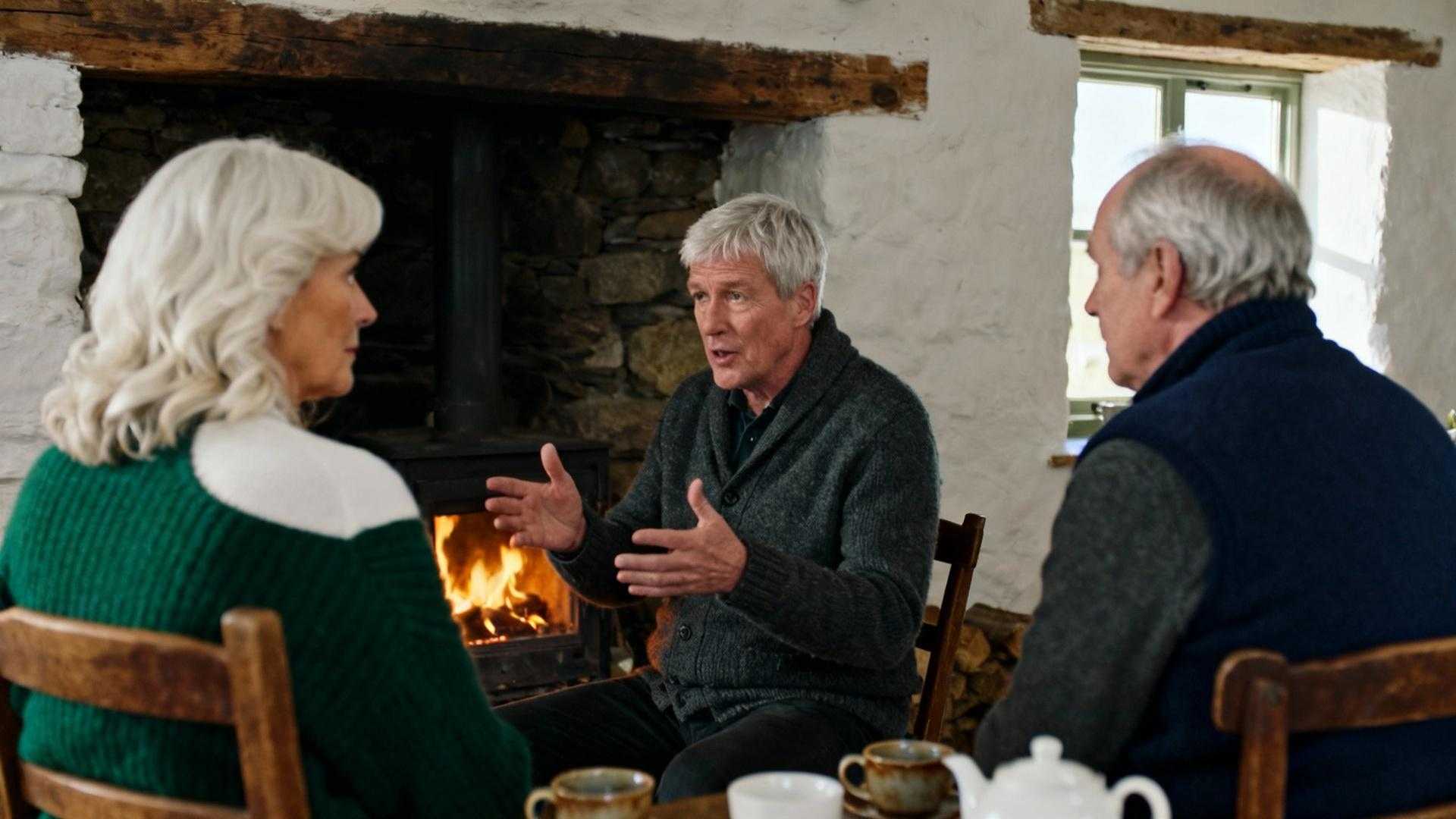Dawn breaks over Baltimore Harbor as the last September stars fade into Atlantic mist. The Cape Clear ferry cuts through rolling swells, carrying a handful of passengers toward Ireland’s southernmost inhabited island. Among them sits Mairead O’Sullivan, clutching a weathered notebook filled with stories her grandmother whispered by turf fires decades ago.
Tonight, she’ll share these tales at Ireland’s most intimate storytelling gathering. No microphones amplify voices here. No Instagram photographers capture moments. Just 125 islanders preserving oral traditions that mainland Ireland commercialized away.
The Ferry to Forgotten Traditions
The 8-mile crossing from Baltimore takes 30 minutes through waters that have carried storytellers for three decades. Cape Clear Island emerges from morning fog like a scene from ancient folklore. Whitewashed cottages dot emerald hills while Atlantic waves crash against dark cliffs below.
This island hosts the Cape Clear International Storytelling Festival each September, drawing just 200-300 visitors compared to Edinburgh’s 10,000-person storytelling crowds. The festival celebrates its 31st year in 2025, founded in 1994 when local residents decided their Gaelic heritage deserved protection from tourism’s homogenizing influence.
Ferry tickets cost €15 roundtrip from Baltimore, but advance booking proves essential. Iceland’s free storytelling heritage offers similar intimacy, though Cape Clear’s Gaeltacht status adds linguistic authenticity most festivals lack.
Where Oral Tradition Survived Tourism
The Cape Clear International Storytelling Festival runs September 5-7, 2025, in venues that seat 20-40 people maximum. Featured storytellers include Len Cabral, Eddie Lenihan, and Maria Buckley Whatton, performing alongside local seanchaí who’ve maintained traditions since childhood.
Fireside Sessions in Atlantic Cottages
Evening sessions unfold in traditional stone cottages with turf fires crackling against September’s chill. No amplification disturbs the natural rhythm of spoken words. Audiences sit close enough to see storytellers’ eyes reflect firelight as ancient tales unfold.
The island’s 3-mile length by 1-mile width ensures every venue stays walkable. Thatched roofs and whitewashed walls create intimate settings where Scotland’s unspoken cultural codes would feel familiar to visitors seeking authentic Celtic experiences.
From Ancient Myths to Modern Seanchaí
Cape Clear maintains its Gaeltacht designation, meaning Irish remains the daily language for many residents. Festival sessions blend English and Irish storytelling, preserving linguistic diversity that mainland festivals abandoned for tourist accessibility.
Local storyteller Paddy O’Driscoll explains, “We tell stories our great-grandparents told, but we also create new ones about island life today.” This balance between preservation and evolution distinguishes Cape Clear from museum-piece cultural events elsewhere.
What September Nights on Cape Clear Actually Feel Like
Festival tickets cost €50-80 for weekend passes, with individual sessions priced at €12-15 each. Events include storytelling walks, boat trips, and late-night concerts featuring traditional Irish musicians alongside international performers.
The Protocol Tourists Never Learn
No ATM exists on Cape Clear Island, and many businesses accept cash only. Festival organizers recommend bringing enough euros for three days, as Ireland’s hidden cultural experiences often operate outside digital payment systems.
Accommodation books out months ahead, with island options limited to Éirí na Gréine hostel and Eleanor O’Driscoll’s guesthouse. Many visitors stay in Baltimore, taking daily ferries to island events scheduled around sailing times.
Where Locals Gather Between Stories
The island’s single pub serves traditional Irish stew and fresh seafood caught that morning. Conversations flow in Irish and English while musicians tune fiddles for evening sessions. Homemade brown bread accompanies every meal, baked using recipes passed down through generations.
Local crafts include hand-knitted Aran sweaters and pottery shaped from island clay. Ferry-accessible islands worldwide share this tradition of protecting authentic experiences from mass tourism.
The Silence Tourism Hasn’t Touched
While mainland Ireland packages folklore for tour buses, Cape Clear’s residents maintain control over their cultural narrative. Festival organizers deliberately limit accommodation and transportation, ensuring visitor numbers never overwhelm the island’s character.
This protective stance preserves what many Irish communities lost to heritage commercialization. Stories here emerge from lived experience rather than performance scripts. The Atlantic itself seems to pause during evening sessions, waves quieting as voices carry across stone walls.
Your Questions About Cape Clear’s Storytelling Tradition Answered
When can I actually attend these storytelling nights?
The Cape Clear International Storytelling Festival occurs September 5-7, 2025, with advance ticket sales through capeclearstorytelling.com. A separate storytelling workshop runs October 24-27, 2025, offering smaller groups and more intensive sessions.
Do storytellers perform in English or only Irish?
Sessions blend both languages naturally, as Cape Clear maintains Gaeltacht status where Irish remains part of daily life. International storytellers perform in English, while local seanchaí often switch between languages depending on their tales’ origins.
How does this differ from Edinburgh’s storytelling festival?
Cape Clear draws 200-300 visitors compared to Edinburgh’s 10,000-person crowds. The island setting creates intimacy impossible in urban venues, while Gaelic heritage adds linguistic authenticity that Scottish festivals sometimes lack in their international focus.
The last ferry departs at sunset, its wake dissolving into September darkness as cottage windows glow amber across Cape Clear. Inside those whitewashed walls, voices older than tourism itself continue rhythms the mainland forgot. Stories survive here because 125 islanders still believe some traditions shouldn’t be photographed.
